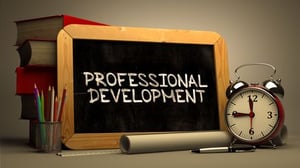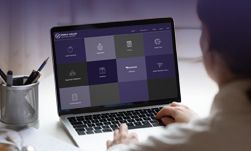 1. Send an Agenda in Advance
1. Send an Agenda in Advance
Send a meeting agenda ahead of time and ask if there is anything not on the schedule that should be included. This gives staff members an opportunity to suggest topics that are important to them.
Providing an agenda allows your staff to prepare for each topic. According to an article from Connected Principals, “conversations that are thought-out rather than reactive are much more powerful,” which can lead to increased efficiency for your meeting.
The same article also suggests limiting the number of items on the agenda. Planning too many different topics can lead to information overload – which means your teachers may leave the meeting having absorbed little, if any, useful information. By leading a more focused meeting, you’ll have time for deeper conversations, and teachers will have time to contemplate each concept.
2. Start with an Icebreaker
Not only do icebreakers help old and new staff start to get to know each other, they set an energetic pace for the start of the school year. When selecting your icebreaker, remember to take your audience into consideration. You know your staff best, so pick an activity you think caters to the group dynamic.
Click here for seven icebreakers from School Leaders Now, focused on team building and establishing a positive culture.
You can also find 10 budget-friendly icebreaker games from huddle, here.
Tag us on Facebook and let us know what icebreaker games work best for your staff. We’d love to share your ideas in an upcoming blog!
3. Discuss Goals
Share school-wide goals and discuss with your staff how to make these goals a reality. In addition to this, have your staff establish their own goals for the year, and ask if there is anything other teachers or the administrative staff can do to help these be achieved.
If you’re having trouble formulating tangible goals, both school-wide and staff-specific, follow “S.M.A.R.T. Goals” guidelines to ensure these objectives are Specific, Measurable, Achievable, Realistic, and Time-Bound.
4. Create a Checklist for Your Staff
An article from the Michigan Association of Secondary School Principals suggests assembling a to-do list for your staff, detailing all tasks that must be completed for the upcoming school year. Listing all pressing items in one place means you won’t have to spend valuable meeting time going over each one. If you deliver this list digitally, include a link to any forms or relevant websites. This extra step on your end saves time for everyone on staff!
Beyond official requirements, you may also remind your staff of a few last-minute tasks:
- Update your summer email message and voicemail
- Add any upcoming events for the school year to the school calendar
- Update your office hours and contact information anywhere it may be posted
5. Keep an Eye on the Time
No one needs to remind you that there is still so much to be done before the doors open for the students. We know you want to use your time wisely, so here are some tips that can help you cut down the length of your meeting:
- Anything that can be covered in an email, should be. Some administrators suggest cutting announcements from the meeting altogether. These details should be sent digitally. You can even include them with your “To-do” checklist!
- You have a wide range of topics to cover, so set an assigned time for each one. If it helps, set a timer or have someone in charge of watching the clock to keep you from going over. If there is still more that needs to be discussed, move on and come back to it later.
- Regardless of your meeting length, start and end ON TIME. According to an article from the George Lucas Educational Foundation, if you consistently start meetings on time, your staff will recognize the hard deadline and even the stragglers will strive to be there accordingly. Likewise, ending on time shows you respect your staff’s time in exchange for respecting yours. If it is time for the meeting to end and not everything has been covered, you can ask a few relevant staff members to stay for some unfinished business. Establish this as a separate meeting so that any unimpacted individuals can get back to business.
- Connected Principals suggests scheduling some optional meetings separate from the collective group meeting time. Only those interested in the topic at hand will attend, which will lead to an efficient meeting that does not burden un-invested parties.
6. Create a Positive Environment
You want to have the most successful professional development day possible, so here are a few extra steps from Connected Principals and the George Lucas Educational Foundation that you can take to establish a positive environment for your meeting:
- Split the cliques. Try using your icebreaker to change the way your teachers would usually seat themselves and have your staff talk to people they don’t usually work with. This sets the tone for an open environment where your staff feels like everyone’s voice can be heard.
- What’s the easiest way to keep people happy? Feed them. If there is no room in the budget for a big spread, try having a professional development potluck, where everyone can bring something to share. Bonus: Sharing food can establish a feeling of communion before your meeting begins.
- Don’t take yourself too seriously. Avoid dull meetings by adding some comics, funny clips, or funny stories to your presentation. Even if you’re not a trained comedian, this extra effort can lighten the mood and keep people engaged.
- Make it special. An article from the George Lucas Educational foundation suggests adding some tablecloths and providing some basic supplies (including chocolate!) that any staff member may have forgotten. The article also suggests playing music to welcome your arriving staff members. If you show that you consider this meeting to be an important event, your staff is likely to see it that way too – which means increased positivity and attentiveness









